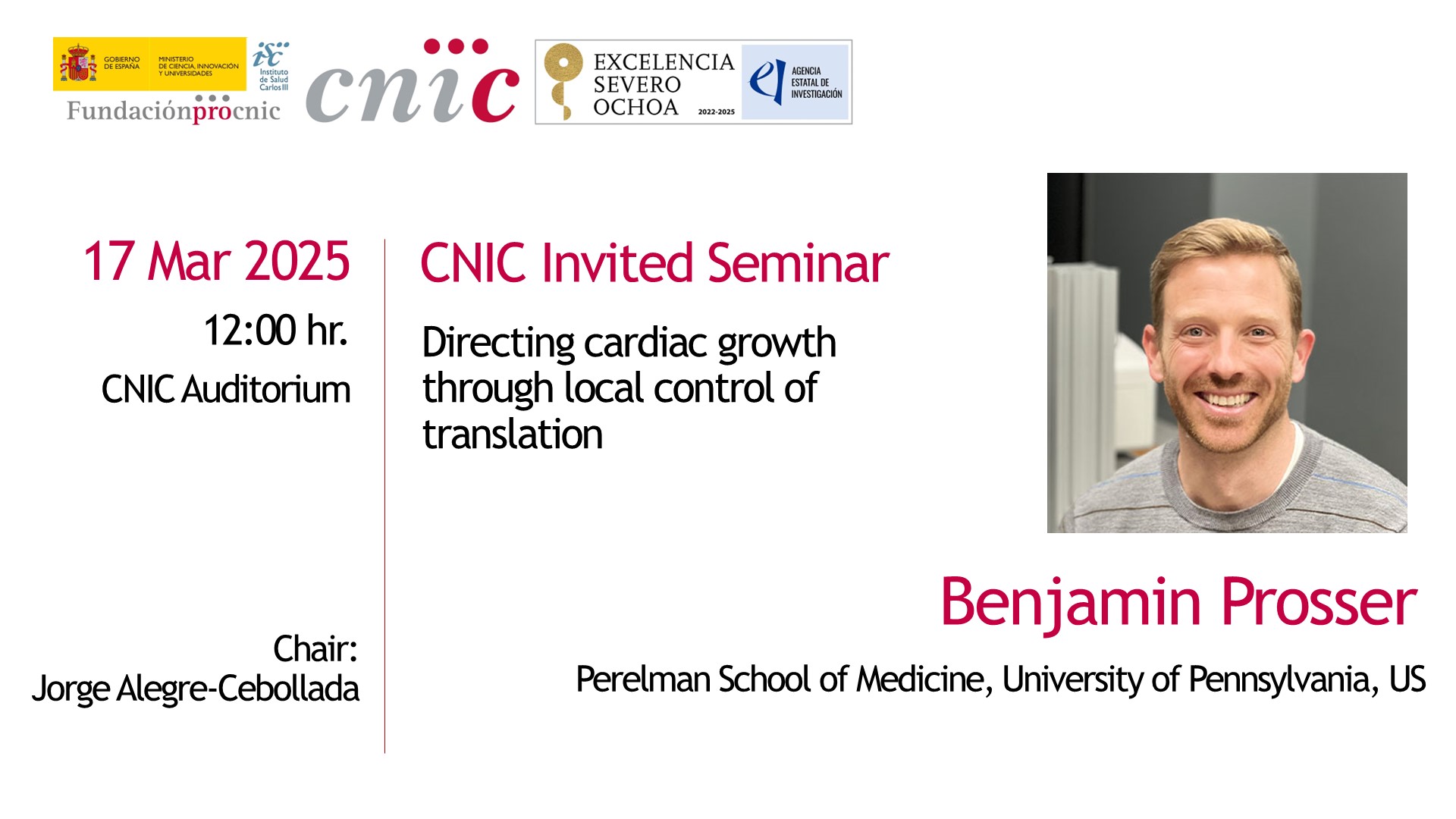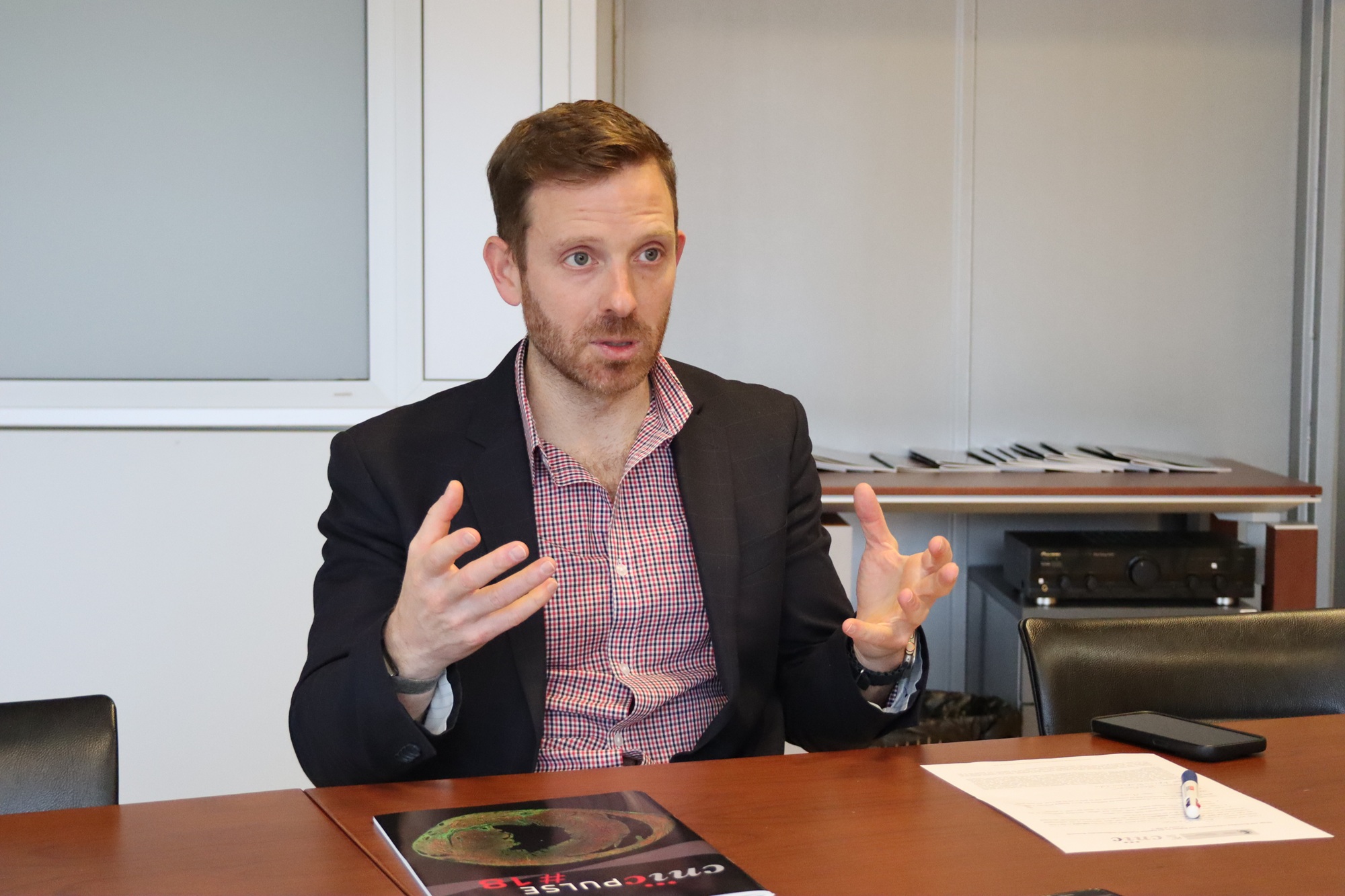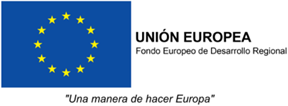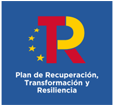Benjamin L. Prosser: "Stepping into neuroscience has definitely meant stepping into a new world"
Dr. Benjamin L. Prosser is an Associate Professor in the Department of Physiology at the Perelman School of Medicine at the University of Pennsylvania.
Dr. Benjamin L. Prosser is an Associate Professor in the Department of Physiology at the Perelman School of Medicine at the University of Pennsylvania. In addition, he serves as Deputy Director of the Pennsylvania Muscle Institute (PMI) and Director del Center for Epilepsy and NeuroDevelopmental Disorders (ENDD). He is also a member of the graduate groups in Cell and Molecular Biology and in Biochemistry and Molecular Biophysics.
He received his undergraduate degree in 2005 in Health and Exercise Science from Wake Forest University and his Ph.D. in Molecular Medicine in 2009 from the University of Maryland School of Medicine.
Dr. Prosser's research focuses on physiology, muscle biology, neurodevelopmental disorders, antisense oligonucleotides, heart failure, cytoskeleton, microtubules and RNA biology. His laboratory seeks to understand the cellular and molecular mechanisms underlying muscle and neurological diseases, with the goal of developing new therapies for these disorders.
- What is your main area of research?
The main focus of my research has been on cardiac mechanics and mechanobiology, really since I started my lab at Penn Medicine about ten years ago. We've been particularly interested in the cardiac cytoskeleton, the internal scaffolding that organizes heart muscle cells—and how this structure regulates the mechanical properties of those cells.
One of the early questions we explored was how microtubules, which are long, rigid elements of the cytoskeleton, behave in a beating heart cell. Imagine these structures having to endure constant contraction and relaxation—every second, every day. We began by visualizing these microtubules in action and found they behave almost like springs inside the heart cell. This fascinating observation sparked our broader interest in how the microtubule cytoskeleton responds to mechanical stress and contributes to the heart’s overall mechanics.
That line of research has evolved into identifying changes in the microtubule cytoskeleton that we believe impair cardiac mechanics in heart disease. We've since moved toward developing therapeutic strategies targeting those changes, with the goal of improving cardiac function in heart failure. This work has become increasingly translational, and we're now collaborating with several biotech partners to advance this therapeutic pipeline.
My team also focused on a different story. While microtubules regulate the mechanical properties of cells, they also serve as tracks for transporting cargo inside the cell. We became very interested in how this transport, particularly of RNA and ribosomes, contributes to remodeling heart muscle cells during stress.
When the heart experiences stress, whether it's physiological (like during exercise or pregnancy) or pathological (like high blood pressure), it grows—a process known as hypertrophy. But the direction of growth matters: does the cell get longer or thicker? That dimensional change impacts function, and the big question has been: what molecular and subcellular processes decide this?
We believe we’ve identified a new model in which intracellular cargo transport plays a central role in dictating heart cell geometry—whether it elongates or thickens—and this has important functional implications.
- How do you study this process? Do you use imaging techniques?
Yes, our lab relies heavily on advanced high-resolution microscopy—both live-cell and fixed-cell imaging. Since we're particularly interested in how RNA and ribosomes are transported within the cell, we use live-cell imaging to track their movement along microtubule tracks in real time.
We then apply different types of stress to these heart muscle cells—mimicking physiological or pathological conditions—and monitor how cargo transport changes. For example, we look at shifts in the direction, speed, or quantity of cargo being transported, and how those changes influence where and how the cell builds new proteins. Ultimately, this helps us understand how the cell grows and remodels in response to its environment.
- How could your work on microtubules and cargo transport lead to new treatments for heart disease?
In many forms of heart disease, particularly cardiomyopathies, the heart undergoes pathological remodeling or hypertrophy. Since the heart is made up of billions of individual muscle cells, the way each of those cells grows has a major impact on the function of the entire organ. If all the heart muscle cells get thicker, the heart wall thickens, which can restrict its ability to fill properly. Conversely, if the cells elongate excessively, the heart dilates—resulting in dilated cardiomyopathy and impaired contraction.
What we’re aiming to understand is the cellular decision-making process: what determines whether a heart muscle cell grows in length or in width? If we can identify the molecular pathways that control this remodeling, we could potentially redirect growth in disease settings. For instance, in conditions that typically cause pathological lengthening, we might be able to either reduce that lengthening or promote thickening to preserve function. The ultimate therapeutic goal is to precisely control the geometry of heart cell growth in order to maintain or restore healthy cardiac function.
- What kinds of therapeutic approaches could this lead to in the future?
A key focus of our work is identifying the molecular machinery that regulates intracellular cargo transport—particularly motor proteins that travel along microtubules. These motor proteins move in different directions: some move cargo toward the cell center, others toward the periphery. We're currently screening small molecules that can modulate the activity or directionality of these motors, with the idea that we could control how cargo is distributed within the cell—and, as a result, influence the cell's growth pattern.
In terms of therapeutic strategy, this could involve genetic manipulation of motor proteins or microtubule regulators, but more feasibly, we’re focusing on small molecules that can selectively alter microtubule function. In fact, in today’s presentation, I’ll be showing data on a few such compounds that appear to influence whether a heart muscle cell becomes longer or thicker. In a clinical context, you could envision applying these compounds to guide heart remodeling in a beneficial direction, potentially offering a novel approach to treat or prevent heart failure.
- I read that part of your research now focuses on brain disorders, particularly following your daughter's diagnosis. Was neuroscience something you were interested in before??
No, not really. I’m happy to talk about it’s actually become a whole other half of my lab. I won’t be presenting that work today, as I’m here mainly to speak about our cardiac research, but yes, this area has become deeply personal.
My daughter was born in 2018, and just a few days later, she began experiencing seizures. A couple of months after that, she was diagnosed with a rare genetic neurodevelopmental disorder. She’s six years old now. She’s severely disabled—nonverbal, just learning to stand and take a few steps—but she’s a happy child. And that’s the most important thing.
She knows love and she give love. Sometimes it’s hard to know how much she understands, but we see it in her eyes, in her smile. That connection matters most. Of course, we hope for more—for her, and for kids like her—and that’s what drove us to get involved in this area of research.
- Was it difficult transitioning from cardiac to brain research? How did that begin?
At first, I assumed many people were already studying this disorder, and honestly, I wasn’t sure what I could contribute coming from a cardiac background. But I quickly realized it was a relatively newly identified condition—only described in 2009—and there were only a few research groups worldwide focused on it.
So, I started reaching out. I found neuroscientists and clinicians on campus who knew about brain development and genetic disorders, and we formed a team. That effort grew into a large, interdisciplinary center focused on neurodevelopmental disorders and epilepsy, with both clinical and translational arms.
- What kind of work is the center doing now??
On the clinical side, our goal is to better understand these rare disorders—how they present, how they evolve. Just in the last year, we’ve seen over 100 children with this specific condition in our clinic. Given that only about 1,000 children are known to have it globally, that means we’ve seen nearly 10% of the worldwide population. That’s helped us learn a great deal.
On the translational side, we’re working on gene-targeted therapies to address the root genetic causes. Because we know exactly what mutation causes this disorder, we have a clear target for therapy. We’ve developed a few therapeutic candidates and hope to move into first-in-human trials in the next few years. It’s an exciting and hopeful time.
And I imagine your work on this rare disorder could help advance research on other brain conditions too?
That’s certainly the hope. Right now, we’re focused on two specific genetic causes of brain disorders, but the infrastructure we’re building—both in terms of clinical evaluation and therapeutic development—is designed to scale.
We’re particularly focused on disorders of the synapse—the site of communication between neurons. The two genes we’re studying both encode proteins that function at the synapse, and there are many other rare diseases caused by mutations in synaptic proteins. By developing expertise in this area, we aim to extend our work to a broader group of synaptic disorders, often referred to as "synaptopathies." The knowledge and tools we’re building can—and should—benefit many more children and families.
- How has your background in cardiac disease helped you study brain disorders? Did you find unexpected links between the two fields??
Surprisingly, yes. Both heart and brain cells are electrically excitable, in fact the two most well-known types, in fact. So, my training in cardiac electrophysiology did give me a foundation for understanding neuroelectrical function. Of course, I had to learn a lot very quickly, especially once we started working on my daughter’s disorder. But when the motivation is that personal, you absorb a tremendous amount in a short time.
Also, the molecular biology and genetic approaches we're using—whether you're targeting a genetic cardiomyopathy or a neurological disorder—share many core principles. So, in some ways, there's a natural crossover. But stepping into neuroscience has definitely meant stepping into a new world.
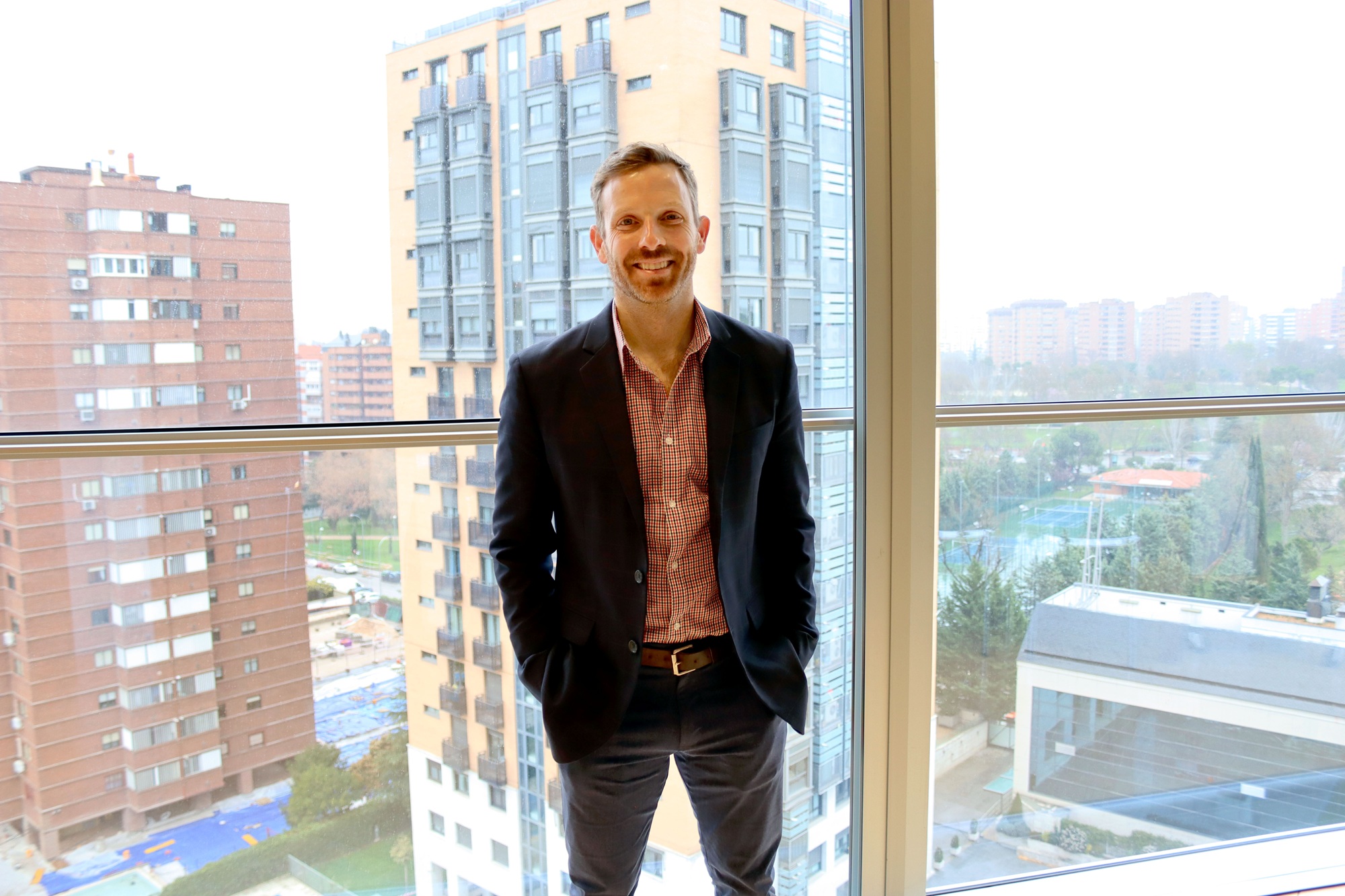
- How do you see your research impacting families affected by rare neurological disorders??
Very directly. We've become very connected with the patient community, and honestly, that’s where I feel I can make the most meaningful impact. Being a scientist and a parent gives me a unique perspective—it keeps science rigorous but always grounded in what matters most: the lives and hopes of families.
We're now developing gene therapies that, if successful, would be the first of their kind to enter a child’s brain. There’s real risk in that, and an immense responsibility. It’s not just about advancing science, it’s about building trust with families, especially when you're asking them to consider enrolling their child in a first-in-human trial.
I feel very fortunate to be in a position where I can do this work, and I never forget that it’s a privilege.
- You’re now deeply involved in clinical trial planning and drug development—did you study medicine or come from a clinical background?
No, I didn’t go to medical school, I’m a PhD. So much of what I’m doing now, especially on the translational and clinical side, is new to me. Planning clinical trials, navigating regulatory pathways, none of that was in my original training. But you learn as you go. You learn what you need when you need it.
- What do you enjoy most mentoring your students or conducting your research?
Mentoring has become one of the most rewarding parts of the job, even more than I expected. It’s also one of the most challenging. One thing you realize quickly is that mentorship isn’t one-size-fits-all. What worked for me may not work for someone else. You have to tailor your approach to each mentee’s personality and needs.
It’s a real learning process—often a two-way street. But when a trainee gets their PhD, or starts their own lab, or launches a career that’s meaningful to them, there’s nothing better. I'm at that stage now where former trainees are running their own labs, doing incredible work. That’s a real source of pride.
- Do you still have mentors of your own?
Absolutely. Especially with how diverse our work has become, having mentors is essential. Whether it’s someone who’s navigated FDA processes, or someone experienced in working with rare disease communities, or people from the drug discovery world on the cardiac side rely on all of them.
When your research spans so many areas, you can’t be an expert in everything. You need people who’ve walked those paths to help guide you.
- There’s been a lot of discussion in Europe about recent U.S. science policy changes proposed by President Trump’s administration. Some say it won't hurt science; others claim the opposite. What’s your view from inside the U.S. research community?
Unfortunately, what I can say with certainty is that science is already being meaningfully disrupted in the United States—and not in a small way.
One of the major issues you might’ve heard about is a recent policy change proposed by the National Institutes of Health (NIH), which is the primary funder of biomedical research in the U.S. The change targets what's called the indirect cost rate—the funds universities use to pay for the infrastructure that supports science, like lab space, administrative support, utilities, etc.
If that policy were enacted as planned—and right now, it's tied up in court—it would cost institutions like mine somewhere in the range of $250 million per year. That’s massive. And the cruel part is that it’s not just being applied to new grants, but to already awarded multi-year grants. Imagine as a research institution you’ve planned for five-year projects - hired staff, set up labs—only to have your support budget suddenly cut in half. It’s destabilizing.
- We’ve also heard some of these changes are affecting diversity-focused grants.
Yes, and it’s very real. We’ve seen abrupt terminations of grants—especially those connected, even loosely, to diversity, equity, and inclusion. For instance, I know postdocs who received prestigious career development awards, not just because of their identity, but based on exceptional science. These grants are crucial—often the bridge that gets someone hired as faculty. And suddenly, they’re just terminated. It’s devastating, both personally and professionally, and damaging to the future of scientific leadership in the U.S.
- And grant reviews themselves are on pause? That sounds like a huge bottleneck?
It is. Study sections and council meetings, the formal review processes needed to award new grants—have been put on indefinite hold. I submitted a grant summer of 2024. It was supposed to start in January 2025, but it’s just... sitting there. We still don’t know if we’re getting it. If no decision is made by this summer, I’ll have to start letting people go from my lab. That’s how real the consequences are.
So yes, we’re in a moment of real uncertainty, and the damage to U.S. science is happening right now.
- It seems contradictory to the idea of “America First,” doesn’t it? Without investment in science, wouldn’t the U.S. risk falling behind countries like China?
Exactly. That’s the irony—and an important message to get out.
Trump wants America to be first in everything. But if these policies persist, the U.S. will absolutely lose ground in global scientific leadership. China is investing heavily in biotech and fundamental research. They want to be the world leader in science—and we're essentially handing them that opportunity.
I don’t think undermining science is the explicit goal of the Trump administration. But it’s become collateral damage—a side effect of broader government restructuring and ideological battles. The real challenge now is helping policymakers understand how much damage is being done, perhaps sometimes unintentionally.
The hope is that reason will prevail—that they’ll recognize the harm being inflicted on life-saving research and critical infrastructure and make course corrections. Because I really do believe Trump doesn’t want to see China surpass the U.S. in science. But that’s where things are headed if we continue on this path.
